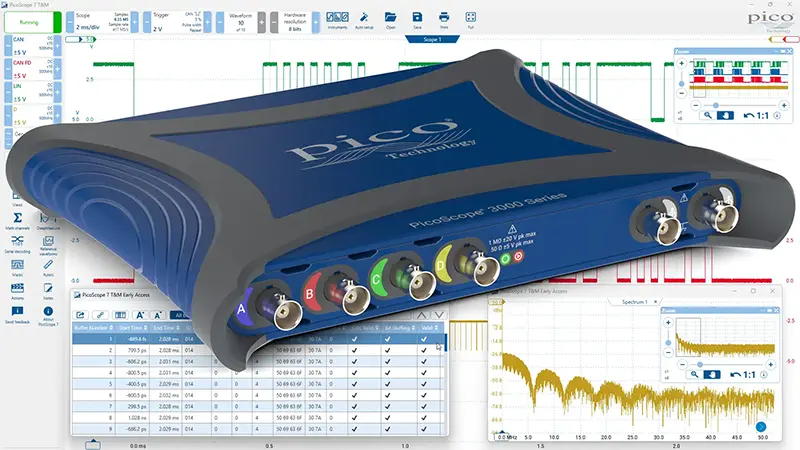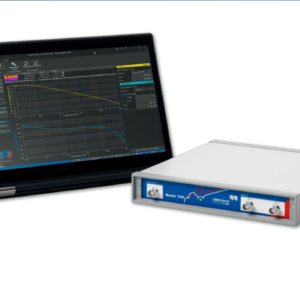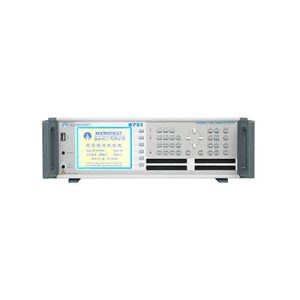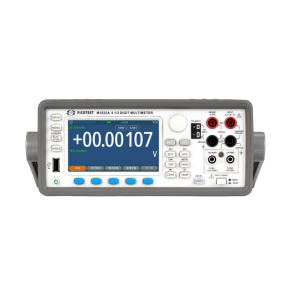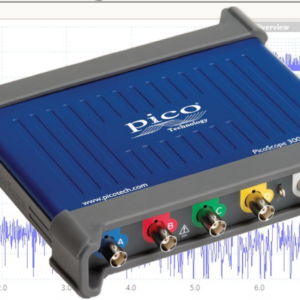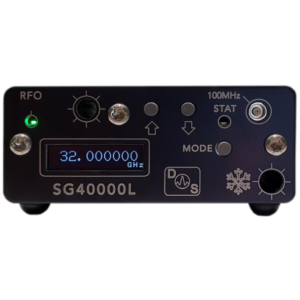The ground-breaking PicoScope 3000E Series
The PicoScope 3000E Series achieves several “firsts” for USB powered scopes: first to 500 MHz, first to 5 GS/s sampling, first with over 1 GS of buffer memory.

Small, light and portable
Pico is once again redefining PC-based oscilloscopes with up to 500 MHz bandwidth and 5 GS/s in a compact, lightweight and portable USB powered package. The PicoScope 3000E range are ideal for engineers working on analog, digital, embedded or power electronics, either in the laboratory or on the move.
The advanced PicoScope 7 software (Windows, Mac or Linux) is easy to use while offering high-end features including 40 serial decoders, mask limit testing and an array of advanced measurements and maths functions.
A software development kit (SDK) is also available for customers wanting to write their own software or use 3rd party applications such as LabVIEW and MATLAB.

High bandwidth, high sampling rate, deep memory
The 500 MHz bandwidth is matched by a real-time sampling rate of 5 GS/s, enabling a detailed display of high-frequency signal detail.
The PicoScope 3000E Series offers an industry-leading 2 GS of capture memory which can be used to sample at 5 GS/s all the way down to 20 ms/div (200 ms total capture time). Alternatively, the memory can be split into segments to capture thousands of waveforms in quick succession into the waveform buffer.
A range of powerful tools allow you to make the most of this deep buffer memory. Easy-to-use zoom functions let you zoom and reposition the display by simply dragging with the mouse or touchscreen, mask tests can scan through 1000s of waveforms and DeepMeasureTM can make millions of measurements on a waveform to quickly identify areas to investigate.
PicoScope 3417E/3418E inputs, outputs and indicators
Front panel
Channel trace color indicators
Rear panel
SuperSpeed® USB-C® connection
The front panel of the oscilloscope brings together the indicators for the four channels, the BNC connectors for those channels, and the LEDs that show power and status. It also includes BNCs for AUX I/O which can be used as an external trigger input or output and an AWG (arbitrary waveform generator / signal generator) output.

PicoScope 7 – the best keeps getting better

Discover why PicoScope 7 PC oscilloscope software outshines traditional benchtop oscilloscopes and why it’s the choice for professionals seeking performance, efficiency and value.
Comprehensive features at no extra cost: PicoScope 7 includes all essential features as standard, eliminating the need for costly upgrades. Unlike benchtop oscilloscopes that charge extra for options like serial decoders, PicoScope 7 offers 40 decoders included right from the start. Often, it’s more cost-effective to purchase a new PicoScope than to buy just a single serial protocol upgrade for an old benchtop.
Superior display and processing power: leverage the power of your existing computer’s high-resolution display to view up to 10x more detail than a typical benchtop scope. The advanced processing capabilities of your PC allow PicoScope 7 to deliver sophisticated mathematics, measurement, and analysis tools that surpass the capabilities of traditional oscilloscopes.
Seamless connectivity and data management: connecting PicoScope to your PC simplifies saving, sharing, and manipulating data. Effortlessly integrate results into reports, work offline, and share data with colleagues—even those without a PicoScope. This convenience streamlines your workflow and enhances collaboration.
Intuitive and customizable user interface: PicoScope 7 features a user-friendly interface that works seamlessly with both mouse and touchscreen inputs. Available on Windows, Mac, and Linux, you can personalize your workspace by naming channels, choosing color schemes and themes, defining custom probes, pinning frequently used tools for quick access, and selecting from 27 languages.
Future-proof investment: with over 30 years of providing free software updates and feature enhancements, PicoScope ensures your investment remains valuable. Buy the hardware once, and enjoy continuous improvements and new features year after year.
Choose PicoScope 7 for a comprehensive, powerful, and future-proof oscilloscope solution that enhances your productivity and ensures you stay ahead of the curve. More information on PicoScope 7
THE oscilloscope for serial decoding

Experience unparalleled serial data analysis with PicoScope USB oscilloscope software, now featuring the capability to decode 40 different protocols, including I2C, SPI, UART, CAN, and many more (see the image for full details). The PicoScope 3000E Series, with its deep memory and high sampling rates, is perfect for complex serial data analysis, enabling simultaneous decoding of multiple protocols.
Key Features:
Comprehensive protocol support: Decode multiple different protocols currently using all the channels of your oscilloscope, providing extensive versatility for complex applications.
High-resolution data visualization: View decoded data in hex, binary, decimal, or ASCII directly beneath the waveform on a common time axis. Error frames are highlighted in red for quick identification and can be zoomed in for a detailed investigation of noise or signal integrity issues.
Detailed table format: See a comprehensive list of decoded frames, including all data, flags, and identifiers. Use filtering to focus on specific frames or search for frames with particular properties. The statistics option gives deeper insight into the physical layer, revealing frame times and voltage levels. Click any frame in the table to zoom into its corresponding waveform.
Export and offline analysis: Easily export table view data for offline viewing and analysis, ensuring you can work with your data whenever and wherever you need.
Link file feature: Accelerate your analysis by cross-referencing values to human-readable text.
Discover why PicoScope is the preferred choice for professionals demanding precision and efficiency in serial decoding. More information on Serial decoding
Carry your electronics lab with you
Say goodbye to bulky oscilloscopes. The PicoScope 3000E Series offers high-performance in a sleek, lightweight, portable design.
In the lab it takes up less space than a benchtop while offering all the advantages of using the high-resolution display, processing power, storage and connectivity of your PC.
For the engineer on the move you can now carry your scope in your laptop bag ready for use on-site. No need to travel to the lab, the lab travels with you.

Arbitrary waveform and function generator
The PicoScope 3000E models come with a sophisticated built-in function generator. This generator is not limited to standard waveforms like sine and square but also supports a wide range of additional waveforms, including Gaussian and PRBS. With a frequency range from 100 μHz to 20 MHz and frequency sweeping capabilities, it is ideal for use with the spectrum analyzer function to test amplifier and filter responses.
All models also include a 14-bit 200 MS/s arbitrary waveform generator (AWG). AWG waveforms can be created or edited using the built-in editor, imported from oscilloscope traces or imported from a CSV file.
Advanced tools allow one or more cycles of a waveform to be output when various conditions are met, such as the scope triggering, an event on the aux input, a mask test failing or a measurement being outside set limits. More information on AWG

Signal fidelity & quality
The PicoScope 3000E Series boasts low noise, minimal crosstalk, and low harmonic distortion. High-resolution processing ensures detailed and accurate waveform representation, even at high zoom levels.
To ensure precision, high accuracy and repeatability, all processing of sampled data is carried out at a higher resolution than the original ADC samples, and a minimum of 16 bits. This means that when using functions like math channels, interpolation, filtering or resolution enhancement, you can really see the extra detail revealed in your signal.
We are proud of the dynamic performance of our products and publish our specifications in detail. The result is simple: when you probe a circuit, you can trust in the waveform you see on the screen.

High resolution for low-level signals
With their 8- to 14-bit resolution (with resolution enhance) and 1 mV/div input sensitivity, the PicoScope 3000E can display low-level signals at high zoom factors. The screenshot shows a 100 kHz sine wave injected onto a 1 kHz square wave. Although the ripple is riding on a signal that is fifty times its size, the high resolution and deep memory of the PicoScope 3000E allow you to zoom in to see, and measure, every detail.
The PicoScope 3000E Series not only has a much wider set of filters (20 MHz, 50 MHz, 100 MHz, 200 MHz) than other scopes, but they’re also more effective as they include both analog and digital components. This means that noise from the whole signal chain including the ADC is attenuated. For example, a combination of 10-bit mode and 20 MHz filter allows very small signals to be viewed with noise levels as low as 23 µV RMS.

FFT spectrum analyzer

The integrated FFT spectrum analyzer provides detailed frequency domain analysis, ideal for identifying noise, crosstalk, and signal distortion. The spectrum analyzer in PicoScope is of the Fast Fourier Transform (FFT) type which, unlike a traditional swept spectrum analyzer, can display the spectrum of a single, non-repeating waveform. With up to a million points and comprehensive measurement tools, PicoScope’s spectrum analysis capabilities are second to none.
With a click of a button, you can display a spectrum plot of the active channels, with a maximum frequency up to the bandwidth of your scope. To focus on a specific frequency range you can directly set the start and stop values of the analyzer frequency axis.
You can display multiple spectrum views alongside oscilloscope views of the same data. A comprehensive set of automatic frequency-domain measurements can be added to the display, including THD, THD+N, SNR, SINAD and IMD. You can even use the AWG and spectrum mode together to perform swept scalar network analysis.

The spectrum works with the waveform buffer so you can capture and rewind through thousands of spectrum plots or why not use the mask limit tests to scan through them all automatically? Spectrum masks can also work with PicoScope actions so you can leave the spectrum running continuously and choose to save mask fails to disk or even sound an audible alarm.
FFT spectrum settings
A full range of settings gives you control over the number of spectrum bands (FFT bins), scaling (including log/log) and display modes (instantaneous, average, or peak-hold). A selection of window functions allows you to optimize for selectivity, accuracy or dynamic range.

